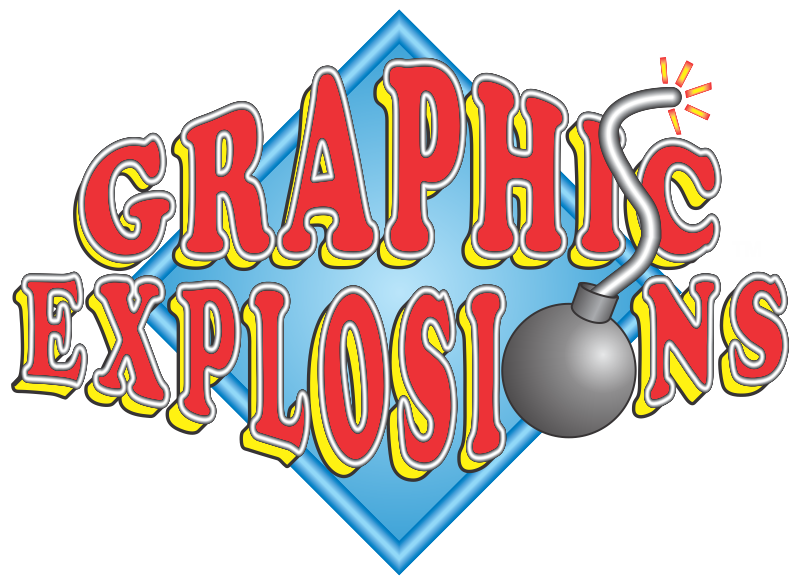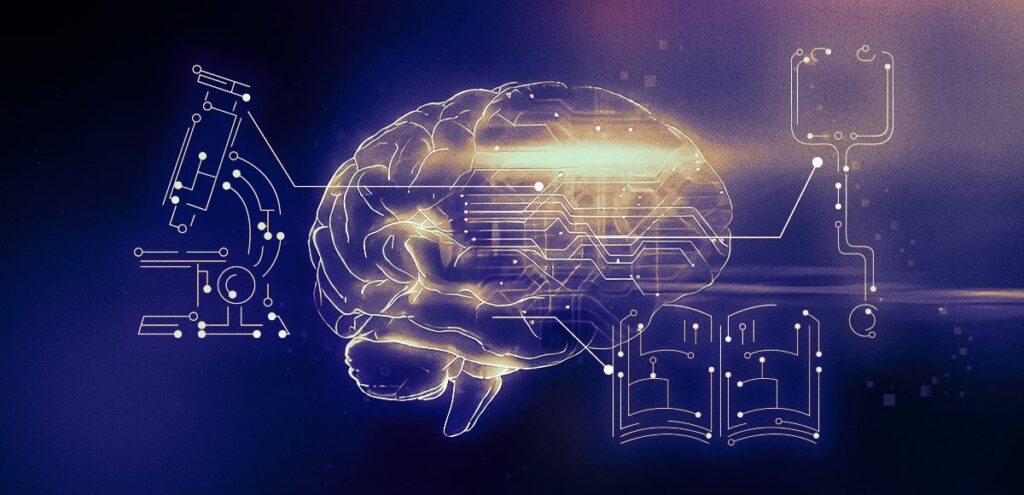Graphicx is a powerful graphic design software that allows users to create stunning visuals and designs. With a user-friendly interface and a wide range of features, Graphicx is the go-to tool for designers looking to bring their ideas to life.
Whether you’re a professional designer or a beginner, Graphicx offers the flexibility and versatility needed to create eye-catching designs that captivate your audience. From logo designs to social media graphics, Graphicx is well-equipped to handle all your design needs. Get started with Graphicx today and take your designs to the next level.
History Of Graphic Design
Graphic design, an essential aspect of visual communication, has a rich history that spans centuries. From its early beginnings to the development of the printing press and the rise of digital design, graphic design has evolved alongside technological advancements and artistic styles. In this blog post, we will explore the key milestones in the history of graphic design, highlighting the significant contributions that have shaped this creative field.
Early Beginnings
In the early stages of human civilization, graphic design emerged as a means of visual storytelling and communication. From cave paintings to ancient Egyptian hieroglyphs, our ancestors used images and symbols to convey messages and preserve stories. Over time, these early forms of graphic design laid the foundation for the visual language we use today. With the advent of writing systems and the invention of paper, graphic design became more refined, allowing for the creation of intricate illustrations and ornate calligraphy.
Development Of Printing Press
The invention of the printing press in the 15th century revolutionized the field of graphic design. Prior to the printing press, books and manuscripts were hand-copied, making them rare and costly. However, with the introduction of movable type and the printing press by Johannes Gutenberg, the mass production of written material became possible. This breakthrough not only made books more accessible but also prompted the development of typographic design. Graphic designers began experimenting with different typefaces, layouts, and printing techniques to enhance the readability and visual appeal of printed materials.
The Rise Of Digital Design
The late 20th century saw a significant shift in graphic design with the advent of digital technology. Computer programs like Adobe Photoshop and Illustrator revolutionized the way designers create and manipulate images. With the rise of the internet, websites became a new canvas for graphic designers to showcase their skills. Interactive designs, animations, and user interfaces became integral parts of the digital design landscape. Today, graphic design encompasses a wide range of mediums, from print to web and mobile applications, each requiring specific skills and techniques.

Credit: www.facebook.com
Elements Of Graphic Design
Graphic design is a field that encompasses various elements working together to create visually appealing and engaging designs. These elements include color theory, typography, and layout and composition. Let’s delve into each of these elements to understand their importance in graphic design.
Color Theory
Color plays a crucial role in graphic design as it can evoke emotions, convey messages, and create visual hierarchy. Understanding color theory helps designers select appropriate color combinations that harmonize and enhance the design.
Typography
The right choice of fonts and typography can greatly impact the overall aesthetic and readability of a design. Typography involves the selection, arrangement, and styling of typefaces to effectively communicate the message and add personality to the design.
Layout And Composition
An effective layout and composition brings together all the visual elements of a design in a harmonious and balanced way. It involves organizing and arranging elements such as images, text, and graphics in a visually pleasing manner that guides the viewer’s eye and enhances the overall user experience.
By incorporating these key elements of graphic design, designers can create visually stunning and impactful designs that effectively communicate messages, evoke emotions, and engage audiences.
Graphic Design Software
Graphic design is an essential element in today’s digital world, allowing businesses and individuals to create visually appealing and impactful designs. Graphic design software provides the necessary tools and features to create stunning visuals, whether it be for digital or print media. In this blog post, we will explore three popular graphic design software options: Adobe Creative Suite, CorelDRAW, and Affinity Designer.
Adobe Creative Suite
Adobe Creative Suite, known for its industry-leading software, offers a comprehensive suite of tools for graphic designers. With applications like Adobe Photoshop, Illustrator, and InDesign, designers can manipulate images, create vector graphics, and design layouts with ease. Adobe Creative Suite is widely used by professionals in various fields, from web and app design to photo editing and print media.
Coreldraw
CorelDRAW is another powerful graphic design software that provides a range of creative tools for designers. With its intuitive user interface and wide selection of features, CorelDRAW allows users to create intricate vector graphics, edit photos, and design layouts. It is a popular choice among designers who prefer its versatility and ease of use.
Affinity Designer
Affinity Designer is a relatively new but rapidly growing graphic design software that has gained popularity among designers. It offers a wide range of tools and features comparable to other industry-leading software. Affinity Designer’s user-friendly interface, precise controls, and affordable pricing make it a compelling alternative for both professional and aspiring graphic designers.

Credit: azuremarketplace.microsoft.com
Graphic Design In Advertising
Graphic design in advertising plays a crucial role in capturing the attention of the target audience. Effective visual communication can convey the brand’s message, enhance its credibility, and leave a lasting impression. Whether it’s print advertising, digital advertising, or advertising campaigns, the power of graphic design cannot be underestimated.
Print Advertising
In the realm of print advertising, graphic design is the backbone of creating visually compelling ads that captivate readers. Print media, such as magazines, newspapers, brochures, and billboards, rely on eye-catching visuals to grab attention amidst the clutter. With a carefully crafted design, including bold colors, typography, imagery, and layout, print ads can make a lasting impression on the audience.
The graphic design elements in print advertising serve to establish the brand’s identity and create a visual hierarchy that guides the reader’s eyes. A clean and balanced layout, accompanied by engaging visuals, can drive the message home and make the brand memorable. Through thoughtful graphic design, print advertising can effectively promote products, services, or events to a wide audience.
Digital Advertising
In the digital age, graphic design remains the driving force behind effective advertising. Digital advertising encompasses various mediums, including banner ads, social media graphics, website visuals, and video ads. With the internet’s vast reach, the competition for attention is fierce, making striking visuals even more crucial.
Graphic design in digital advertising focuses on creating visually appealing assets that resonate with the target demographic. From attention-grabbing banners to eye-catching social media posts, every element is meticulously designed to enhance brand recognition and engagement. Through the use of color psychology, typography, and imagery, graphic design can evoke emotions, spark curiosity, and ultimately drive conversions.
Advertising Campaigns
Advertising campaigns require a cohesive and impactful approach to reach the target audience effectively. Graphic design plays a central role in ensuring consistency and visual appeal across all elements of the campaign. From the logo and brand identity to promotional materials and advertisements, every design decision contributes to the campaign’s success.
Throughout an advertising campaign, graphic design helps create a unified and memorable visual language that delivers the brand’s message consistently. Cohesive color schemes, typography, and imagery unify various touchpoints, such as print ads, digital assets, and outdoor displays. A well-executed graphic design elevates the campaign’s effectiveness and increases brand recall, ultimately boosting the brand’s visibility and revenue.
Graphic design in advertising is a powerful tool that enables brands to communicate their message effectively across different mediums. Whether through print advertising, digital advertising, or comprehensive advertising campaigns, the strategic use of visuals can capture attention, leave a lasting impact, and drive desired outcomes for the brand.
Graphic Design In Web Design
When it comes to web design, graphic design plays a crucial role in creating visually appealing and engaging websites. Graphic design in web design focuses on designing the visual elements of a website, such as colors, typography, and images, to create a visually appealing user experience. In this blog post, we will explore three key aspects of graphic design in web design: user interface design, responsive design, and visual hierarchy.
User Interface Design
User interface design is concerned with how users interact with a website and aims to make this interaction as seamless and intuitive as possible. A well-designed user interface can enhance the overall user experience and improve the website’s usability.
Some key elements of user interface design include:
- Layout and structure: Designing a user-friendly layout that organizes content in a logical and easy-to-navigate manner.
- Navigation: Creating clear and intuitive navigation menus and buttons that help users easily find the information they are looking for.
- Buttons and forms: Designing visually appealing buttons and forms that are easy to interact with, encouraging users to take desired actions.
Responsive Design
In the era of mobile devices, responsive design has become a necessity for websites. Responsive design ensures that a website can adapt and display properly on various devices and screen sizes, including desktops, tablets, and smartphones.
Some key considerations for responsive design include:
- Flexible layout: Designing layouts that can adjust and reflow based on the screen size, ensuring the website looks good on any device.
- Media queries: Implementing CSS media queries to apply different styles and layouts depending on the device’s screen size.
- Touch-friendly elements: Designing elements that are easy to tap or swipe on touchscreens, considering the limitations of mobile interactions.
Visual Hierarchy
Visual hierarchy refers to the arrangement of elements on a webpage to guide users’ attention and prioritize the importance of information. Establishing a clear visual hierarchy can help users quickly understand the content and navigate through the website effectively.
Some techniques for creating a strong visual hierarchy are:
- Contrast: Using contrasting colors, sizes, and fonts to highlight important elements and create a visual distinction.
- Whitespace: Incorporating sufficient whitespace between elements to reduce clutter and improve readability.
- Typography: Choosing appropriate fonts and font sizes to establish a hierarchy of headings, subheadings, and body text.

Credit: graphicx.com
Graphic Design In Branding
When it comes to establishing a strong and memorable brand, graphic design plays a crucial role. The visual elements of a brand, such as its logo, brand identity, and brand guidelines, are essential in creating a cohesive and recognizable image that resonates with its target audience. In this blog post, we will delve into the world of Graphic Design in Branding, exploring the importance of logo design, brand identity, and brand guidelines in shaping a successful brand.
Logo Design
A logo serves as the face of a brand, making it instantly recognizable to customers, clients, and stakeholders. It is a visual representation of what a brand stands for and embodies its values, personality, and unique selling proposition. A well-designed logo has the power to evoke emotions, establish credibility, and leave a lasting impression. It should be distinctive, memorable, and versatile, ensuring it complements all brand touchpoints, from digital platforms to packaging and marketing materials.
Brand Identity
A strong brand identity goes beyond just a logo; it encompasses the overall visual language and style that a brand adopts. It includes elements such as color palette, typography, imagery, and graphic motifs that are consistently used across all brand communications. The brand identity creates a cohesive and unified look and feel that differentiates the brand from its competitors and helps establish a strong brand presence in the market. The key is to create a unique and cohesive visual language that aligns with the brand’s personality, values, and target audience.
Brand Guidelines
Brand guidelines serve as a set of rules and instructions for using the brand’s visual elements consistently. These guidelines document the correct usage of the logo, colors, typography, and other brand assets, ensuring that they are applied correctly across various mediums and touchpoints. By maintaining consistency in visual elements, brand guidelines help reinforce the brand’s identity and create a sense of familiarity among its target audience. Moreover, brand guidelines assist in preserving brand integrity and preventing any misrepresentation or dilution of the brand’s visual identity.
Future Trends In Graphic Design
In the ever-evolving world of graphic design, staying updated with the latest trends is crucial. The future of graphic design holds immense potential, with new technologies and innovative approaches shaping the industry. Let’s explore some of the exciting trends that are set to shape the future of graphic design.
Minimalism And Simplicity
Minimalism and simplicity have been steadily gaining popularity in recent years and continue to be prominent trends in the future of graphic design. This design approach focuses on using fewer elements, clear and concise messaging, and clean aesthetics to make a strong visual impact.
With attention spans diminishing and the need for quick information consumption growing, minimalism offers a refreshing and user-friendly design style. By removing clutter and unnecessary distractions, minimalist designs can communicate ideas effectively and provide a seamless user experience.
Minimalist designs often incorporate ample white space, minimal color palettes, and simple typography. This approach allows the audience to focus on the core message without any distractions. The use of bold and legible fonts further aids in emphasizing important information.
Motion Design
Motion design is an emerging trend that blends graphic design and animation to create visually captivating experiences. This trend has gained significant popularity in recent years and is expected to continue to thrive in the future.
With the increasing use of video content and social media platforms, motion design allows brands to stand out and engage their audience in a dynamic way. By incorporating movement, animation, and interactive elements into designs, motion design provides a unique and immersive experience.
Incorporating motion design in graphics can help tell a story, convey emotions, or explain complex concepts. It adds a layer of visual interest that captures attention and provides a memorable experience. Whether it’s subtle animations or more elaborate transitions, motion design can bring graphics to life and create a lasting impact.
Augmented Reality
The integration of augmented reality (AR) in graphic design opens up exciting possibilities for the future. AR technology enables designers to overlay digital elements onto the real world, creating interactive and immersive experiences.
With the increasing use of AR in various industries, including advertising, gaming, and product design, graphic designers can incorporate this technology to enhance their designs further. AR allows brands to create unique and interactive experiences for their audience, blurring the line between the digital and physical worlds.
By using AR, designers can bring static graphics to life, allowing users to interact with the design elements. This level of interactivity provides a deeper level of engagement and encourages users to explore and interact with the design. Whether it’s a virtual try-on feature or interactive product packaging, AR offers endless possibilities for innovative and engaging graphic design.
Frequently Asked Questions For Graphicx
Is Graphicx A Reliable Software For Graphic Design?
Yes, Graphicx is a highly reliable software for graphic design. It offers a wide range of tools and features, allowing users to create stunning visuals with ease. Its intuitive interface and powerful capabilities make it a top choice for professionals in the industry.
How Does Graphicx Enhance The Graphic Design Process?
Graphicx enhances the graphic design process by offering a comprehensive set of tools and features. From advanced image editing to seamless integration with other design software, Graphicx enables designers to achieve their creative vision efficiently and effectively.
Can Graphicx Be Used By Beginners In Graphic Design?
Absolutely! Graphicx is designed to be user-friendly, making it suitable for both beginners and experienced graphic designers. With its intuitive interface and extensive tutorials, beginners can quickly learn the ropes and start creating impressive designs in no time.
What Are The Key Features Of Graphicx?
Graphicx offers a range of key features, including advanced image editing capabilities, a vast library of templates and assets, precise typography tools, and seamless integration with other design software. These features empower designers to bring their creative ideas to life and elevate their designs.
Conclusion
Graphicx is the ultimate solution for all your graphic design needs. With its user-friendly interface and wide range of customizable templates, creating stunning designs has never been easier. Whether you’re a business owner, marketer, or content creator, Graphicx offers endless possibilities to enhance your visual content.
Save time, money, and effort by harnessing the power of Graphicx today. Unlock your creative potential and make a lasting impression with professional-grade graphics. Try Graphicx now and watch your designs come to life.




